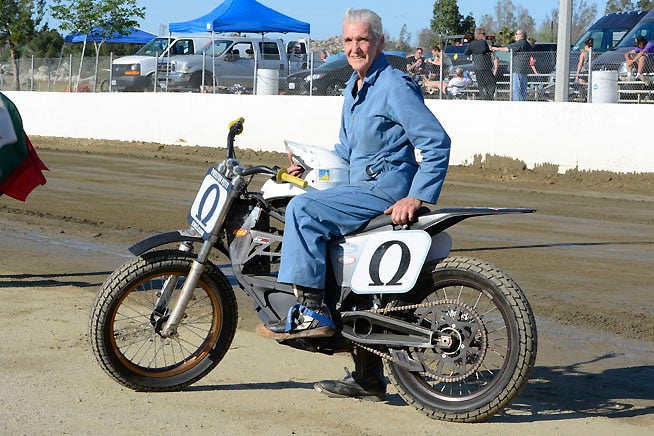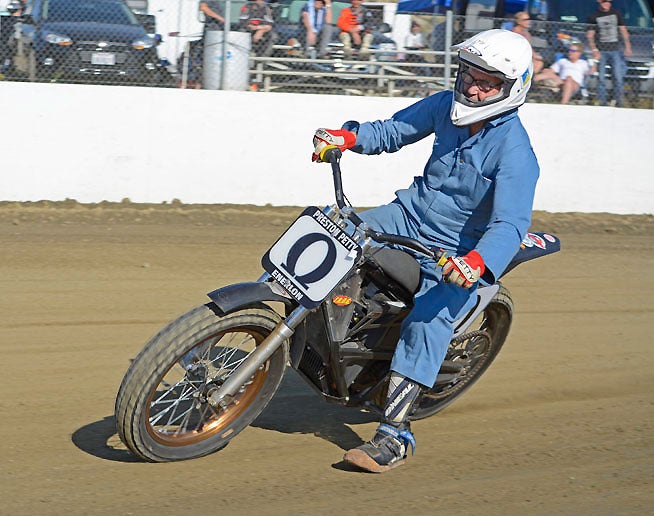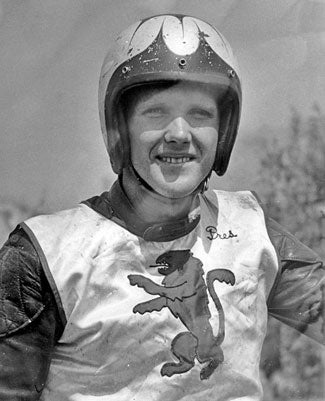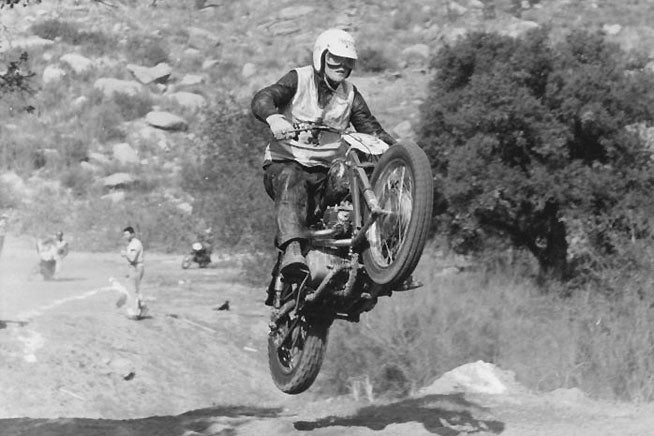At 74, intrepid motorcyclist and AMA Hall of Famer Preston Petty is finding new ways to challenge himself in the sport he loves.

Motorcyclists have always been a microcosm of society in that a tension always exists between traditionalists and modernists.
Some riders long for the simplicity of the past while others won’t settle for anything less than riding the latest and greatest technology. That tension drives demand in a marketplace where forced-induction, 300-horsepower superbikes and comparatively mundane air-cooled, pushrod V-twin cruisers coexist. Likewise, in the dirtbike world customers can choose among sophisticated motocross machines that showcase four-stroke technology gleaned from MotoGP racing and those with far simpler engines based on 1960s Japanese single overhead cam architecture. And, then, for real science-fiction types, there is an emerging segment of electric-powered motorcycles that span just about all of these genres.
Preston Petty, 74, all of them. He is proud of his storied motorcycling heritage, but he is careful to keep it in its proper perspective, and he is a cutting-edge thinker who maintains a fascination with tomorrow’s technology today, especially where it pertains to electric-powered motorcycles.
If there’s an irony to be found here, it’s that Petty’s praise for his latest project, an electric-powered Zero, it comes from a man who has burned a lot of gasoline on the trail to becoming a motorcycling legend, and he attained that status by always thinking slightly ahead of the curve. As an up-and-coming young racer in the 1950s and ‘60s, Petty was motocross when motocross wasn’t cool—at least not in America. He went on to find success in international endure competition, representing the United States in the notoriously difficult International Six Days Enduro, which was known as the International Six Day Trial back in his day. In the 1970s he revolutionized the off-road aftermarket through his perfection of plastics for use as dirtbike fenders. And after selling his business in 1980, he became one of the earliest early technology adopters by working with microcomputers, later known as PCS before practically anyone had one in their home. Experimentinmg with electric motorcycles are merely a continuation of his desire to improve the sport.

Such forward thinking springs forth from a mind that was molded, at least initially, by a conservative Mormon father, a lawyer by profession. Motorcycles? They would only be a fad, a phase. Surely, Dad must’ve thought, young Preston would make better use of his time one he grew up and became a man. Perhaps the earliest warning sign that young Preston was a gearhead should have come when witnessing him ride his mother’s vacuum cleaner as a child in the Petty’s Los Angeles home. There were better contrivances, of the two-wheeled variety, and the motor-minded Petty soon latched onto them. He got his first real motorcycle, an Ariel Colt, at the age of 13 in 1954. Just three years later, Petty would lay tire tracks on Perris Raceway’s dirt for the first time. By then he was already an accomplished scrambles and off-road racer.
“My first race here at Perris was in 1957, the year that the place opened,” Petty says as he looks around the aged facility while preparing for practice at a Southern California Flat Track Association race. “The word ‘motocross’ wasn’t even used back then. It was called a TT Scrambles. Then in 1959, ’60 and ’61 I rode a lot of half miles [flat track] at Ascot. Then I didn’t ride any more half miles for 40-plus years until my sponsor got me back involved in it. I was just helping him because he was interested in flat track, and then one day he asked me if I thought an electric motorcycle could be competitive. I thought that of all the racing venues out there, this would be one that is well-suited for an electric bike. So about two years ago he went and bought a Zero MX model, and we converted it—lowered the suspension and changed the wheels—to make it work. Then after I got done with it, he said. ‘Hey, great. You can be the rider, too.’”

Armed with the lessons of tales told in Ekins’ shop, Petty spent his youth blazing trails in the Santa Monica mountains aboard that little Colt before eventually succumbing to the lure of racing.
“The Colt was basically a 200cc version of the BSA C15,” Petty recalls. “It was an air-cooled, pushrod, two-valve single, and it was gutless. The Zero makes way more power than the Colt ever could! But then I got an NSU 125, which was a German-built two-stroke, in 1957, and I rode the Catalina Grand Prix with that in 1957 and ’58.
“But motocross was my main interest, and in 1960 I got to go over to Europe to race one of Dave Bickers’ Greeves, and I loved it,” Petty continues. “I thought it was great, and here was this championship that the U.S. had no part of. I thought that we needed to be part of that world, but motocross pretty much floundered here until 1966 when (250cc World Motocross Champion) Torsten Hallman came over here and blew everybody away, and then in ’67 Edison Dye brought over the Husqvarnas. That got motocross going.”

Motocross had yet to capture the enthusiasm of American motorcycle racing fans, an in the interim Petty shipped off to Utah’s Brigham Young University in search of a better education and, at least his father hoped, a clean break from his motorcycle addiction. Much to Dad’s chagrin, Petty’s earliest college lesson applications were in the field of backstreet economics.
“My dad had bought me a Volvo car to get around, and when I got to school I met a guy who had a Buick Roadmaster, and we traded the Buick and $500 for the Volvo,” Petty recalls. “I told my dad what I did, since it was basically his car, and he told me I could keep the 500 bucks for school expenses. Well, the first school expense I could think of was to get a motorcycle. So I went up to Wayne Moulton’s Triumph in Salt Lake City and bought a Triumph Tiger Cub.”
Petty snuck his new pride and joy into his dorm room to keep it out of the elements, but he soon learned that Tiger Cubs and dorm rooms don’t mix when one night, after adjusting the Triumph’s timing, he leaped on the Cub’s kickstarter and it inadvertently started on the first kick. The roar from the Cub’s tailpipe brought the dorm mother running and hastened the Cub’s return to the cold environment of the BYU parking lot. Petty had already felt like a square peg in a round hole already, and that incident was the last straw, so he packed his bags, strapped his motorcycle to the Roadmaster’s bumper and left BYU for Los Angeles.
 Your Privacy Choices
Your Privacy Choices